What Does a Liquid Rhinoplasty Do?
Facial Plastic Surgery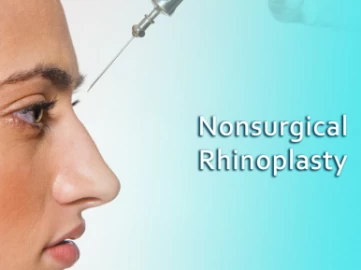
A non-surgical nose job or liquid rhinoplasty is a new technique of cosmetic nose surgery that is less invasive and costly than the traditional nose job. In addition, this method has fewer complications and risks than the normal nose job. Nonsurgical rhinoplasty is suitable for people who want to enhance their appearance without undergoing major surgery. In the following, we will discuss all aspects of this rhinoplasty method.
What Is Nonsurgical Rhinoplasty?
Non-surgical rhinoplasty, also known as liquid rhinoplasty, is an efficient technique of nose surgery through which a filler ingredient -such as hyaluronic acid- is injected under the nasal skin to change the appearance of the nose for the better. This type of nose job is outpatient, less complicated, and less expensive; however, its results are not permanent and must be repeated frequently.
Interestingly, liquid rhinoplasty is mostly the best option for the ones who have minor deformities and asymmetries in their nose (such as mild dorsal hump) or the ones who have had traditional rhinoplasty in the past but need slight changes in some parts of their nose, like their nostrils or nasal tip. Since this procedure is temporary and less expensive, it can be a great choice for those who want immediate but short-term results and those who cannot afford an open surgery.
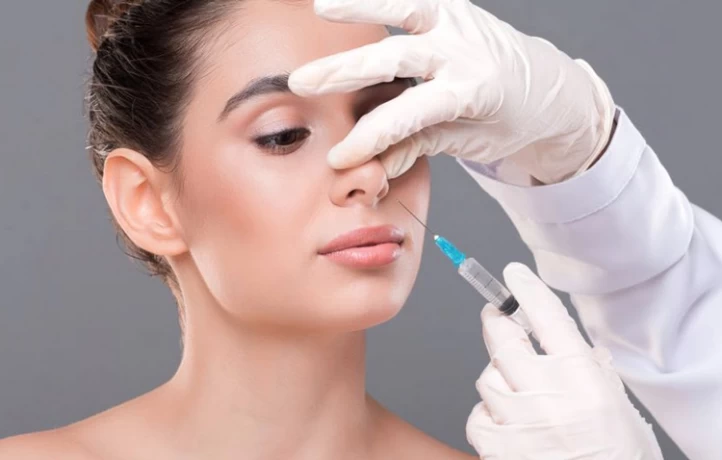
Ideal Candidates for Liquid Rhinoplasty
Liquid rhinoplasty is suitable for people who:
- Want their nasal dorsum to disappear. Of course, this method is suitable for people who have moderate nasal bridge or hump;
- Have a dent on the tip of the nose;
- Have nasal tip deviation;
- Want to lift their nasal tip;
- Have already undergone surgical rhinoplasty and are not satisfied with the result of the surgery;
- Have a dent on the bridge of their nose;
- Have short noses that don’t harmonize with the rest of their facial features.
Who Is Not a Good Candidate for Liquid Rhinoplasty?
Although liquid rhinoplasty is a less complicated surgery, it is not suitable for people with the following:
- Fleshy and wide noses;
- Severe septum deviation;
- Droopy nasal tip;
- Broken nose;
- Breathing issues and
- Severe dorsal hump.
Pros and Cons of Nonsurgical Nose Job
A non-surgical nose job has many advantages compared to surgical rhinoplasty. Some of its pros include:
- It only takes 15 to 30 minutes, while surgical rhinoplasty takes two to three hours;
- Its downtime time is 24 hours (or less);
- You can see the results of the operation in a short time;
- It is an outpatient procedure and is done under local anesthesia;
- If you are not satisfied with the new shape of your nose, the doctor can reverse the changes;
- Bruising and swelling after liquid rhinoplasty are minimal;
- It is less expensive;
- It has fewer complications, such as scarring and discoloration;
- Your voice will not change, and
- You won’t face postoperative olfactory dysfunction.

On the other hand, a non-surgical nose job has some disadvantages that may discourage you from undergoing it. The cons of liquid rhinoplasty include the following:
- The results are not permanent, as the nose fillers will be absorbed between 6 to 12 months;
- It may cause blockage of blood vessels;
- It may cause necrosis;
- Since the veins at the end of the nose are connected to the eyes, vascular occlusion may lead to blindness.
Preparing for Nonsurgical Nose Job
There are different preparation guidelines for each kind of nose filler ingredient. However, there are some general preparation tips that you should consider before undergoing a nonsurgical nose job.
- Avoid taking blood thinners (such as aspirin), anti-inflammatory drugs (such as ibuprofen), and vitamin E supplements from a week before the operation;
- Take vitamin K supplements before the procedure to minimize bruising and redness. Good natural sources of vitamin K are leafy green vegetables;
- Drink plenty of water from a week before the operation to hydrate your skin;
- Do not overeat on the day of the operation;
- Avoid having caffeine for a couple of days before the surgery;
- Reduce your sodium and sugar intake a day or two before the procedure.
The procedure of Liquid Rhinoplasty
The whole procedure of liquid rhinoplasty takes less than an hour and involves the following steps:
- You are asked to explain your expectations from the operation once again.
- The specialist analyzes the anatomy of your face and makes necessary marks on your skin.
- You sit on a chair, and the doctor disinfects your nose with an alcohol-based liquid.
- A topical anesthetic is applied on and around your nose so you won’t feel any pain during the operation.
- A proper amount of filler ingredient is injected into the desired areas.
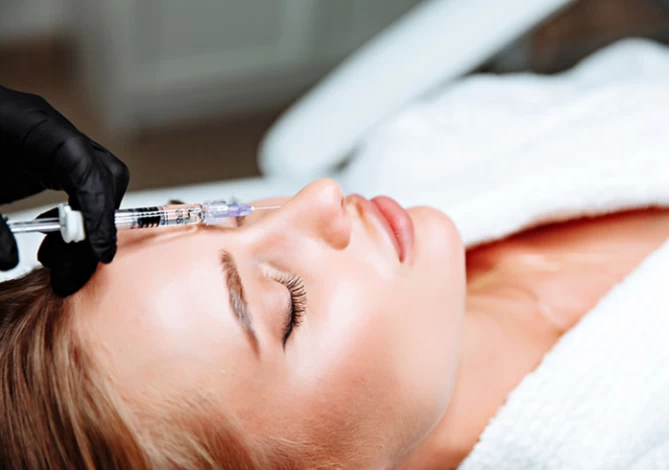
What to Expect After Nonsurgical Nose Job
After a liquid rhinoplasty, you may experience pain, swelling, and redness in the injected area; however, all of them should subside within a few days. To minimize the inflammation and discomfort, you can put an ice pack on the treated site right after the operation. Fortunately, you will be able to see the final result of your nose job after one or two weeks.
Non-surgical Nose Job: Recovery and Aftercare
As mentioned before, a nonsurgical nose job does not have a recovery period, and most people return to work on the same day. However, following proper nose filler aftercare is important to ensure optimal results and minimize the risk of complications. Some non-surgical rhinoplasty aftercare tips include:
- Avoid pressure on the injected area for one to two weeks;
- Be careful not to get hit on the nasal area;
- Massage the operated area as your surgeon suggests;
- Elevate your head when you sleep for a couple of nights;
- Take prescribed painkillers;
- Avoid wearing glasses for as long as your doctor suggests;
- Avoid strenuous activities for a week;
- Ask your doctor about when you can take a shower or wear make-up, and
- Have your nose checked a week after the procedure.
Nonsurgical Rhinoplasty Side Effects
Right after nonsurgical rhinoplasty, you may experience swelling, bruising, redness, nosebleeds, mild pain in the injection site, skin sensitivity, nausea, and filler movement. All these side effects are common and will be resolved by taking medications and being patient. However, in case of fever, blurred vision, bruising that expands gradually, and symptoms of an allergic reaction, contact your doctor immediately.
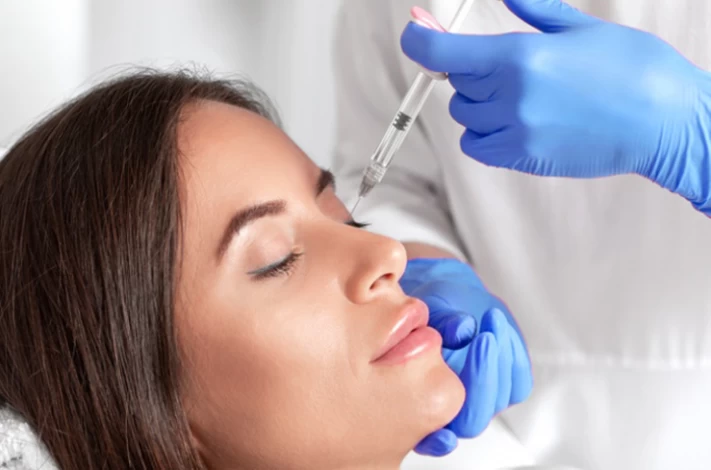
Possible Risks of Nonsurgical Rhinoplasty
If an experienced and professional doctor does liquid rhinoplasty, there will be no serious risk. However, in some cases, some risks may occur, such as:
- Asymmetry of the nasal fins;
- Allergic reactions which may cause pain and itching;
- Fever;
- Tissue death;
- Infection;
- Bluish skin discoloration;
- Vascular occlusion;
- Changes in the color of the injected skin.
Fillers Used in Nonsurgical Rhinoplasty
In the past, doctors used bovine collagen and silicone in nonsurgical rhinoplasty. Still, they use hyaluronic acid (HA) or calcium hydroxylapatite (CH) because they are safer and more efficient.
Most doctors prefer hyaluronic acid as it is softer, dissolvable, and reversible. However, if the patient wants the outcome of the surgery to last longer, the doctor uses CH filler. It is noteworthy that CH fillers are not reversible and cause more discomfort after the operation.
Nonsurgical Rhinoplasty Results
Depending on the type of nose filler used in your procedure, the results of nonsurgical rhinoplasty can last 6 to 12 months. Although this operation doesn’t make your nose smaller, it can add width and height and make it more balanced with the rest of your facial features.
As mentioned earlier, one of the main advantages of liquid rhinoplasty is that its results are reversible, so you can undo all changes if you are unsatisfied with the results of your operation.
How Much Does Liquid Rhinoplasty Cost in Iran?
The cost of liquid rhinoplasty in Iran can vary depending on several factors, including the doctor's expertise, the type and amount of filler used, and the clinic's location. On average, liquid rhinoplasty costs in Iran range from $300 to $800.
Iran, one of the main hubs of rhinoplasty in the Middle East, is a perfect destination for those who want to perform liquid rhinoplasty at a fair price. For more information on surgical and nonsurgical rhinoplasty, contact Raadina Co. via this link.
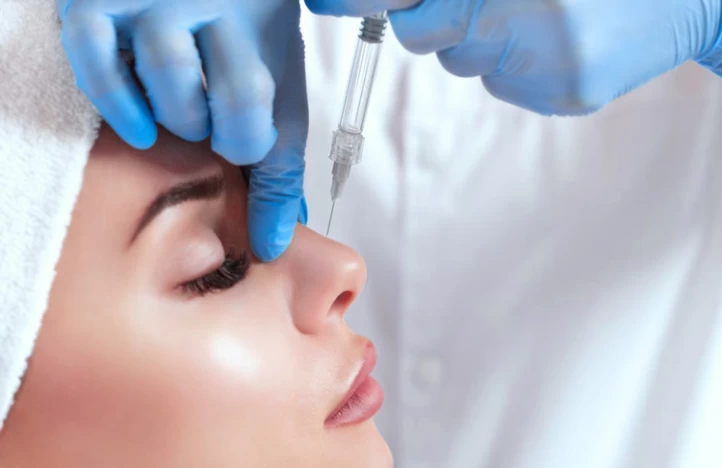
Conclusion
To summarize, a non-surgical nose job is the less-invasive version of rhinoplasty surgery. Although a nonsurgical nose job doesn’t make dramatic changes in your appearance, it can improve the overall look of your nose.
FAQs on Liquid Rhinoplasty
1) How long does liquid rhinoplasty last?
Depending on the nose filler type, liquid rhinoplasty results may last 6-12 months.
2) Can I wear make-up after a nonsurgical nose job?
Not using make-up and skincare products for a few days after a non-surgical nose job is recommended.
3) How long after liquid rhinoplasty can I exercise?
Most doctors suggest the patient avoid heavy exercise for a week, especially bending and lifting heavy objects.
4) Is liquid rhinoplasty painful?
Since the liquid rhinoplasty is done under local anesthesia, you will not feel any pain during the procedure. However, you may experience mild pain a day after the operation, which can be controlled by taking painkillers.


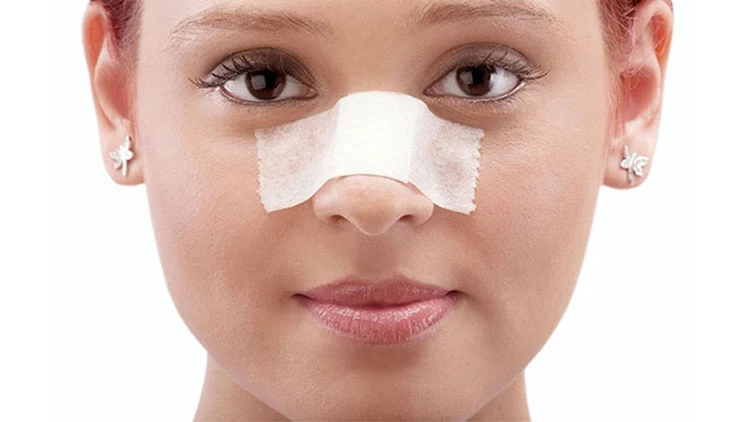
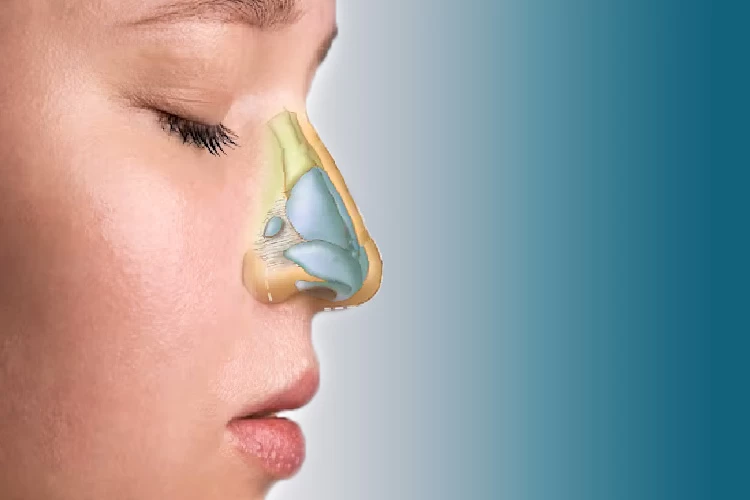
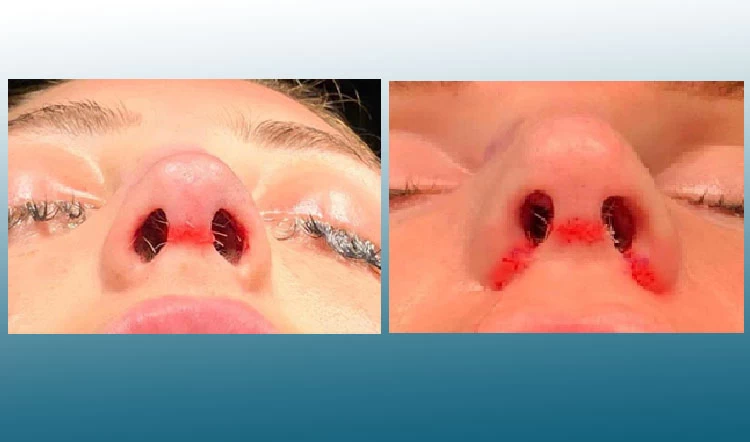
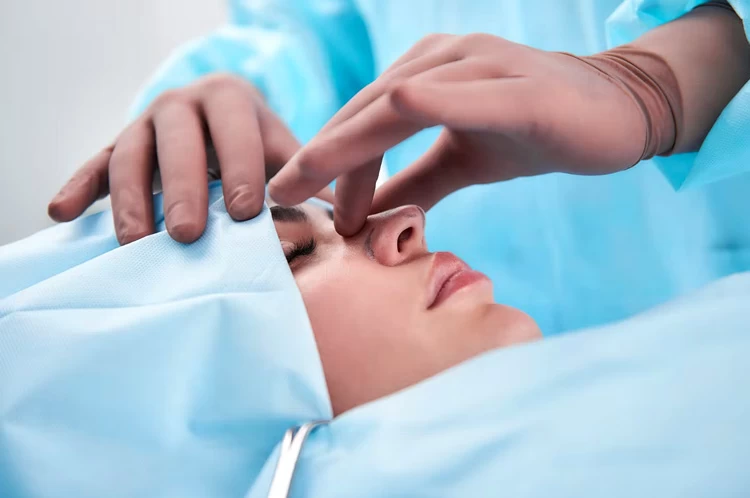
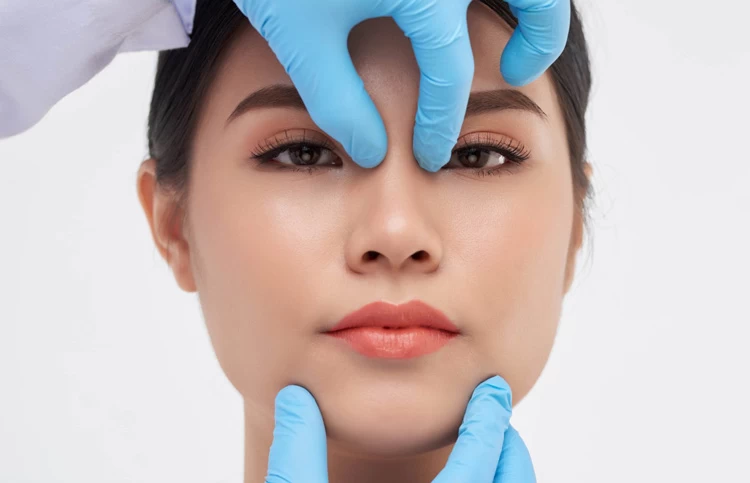



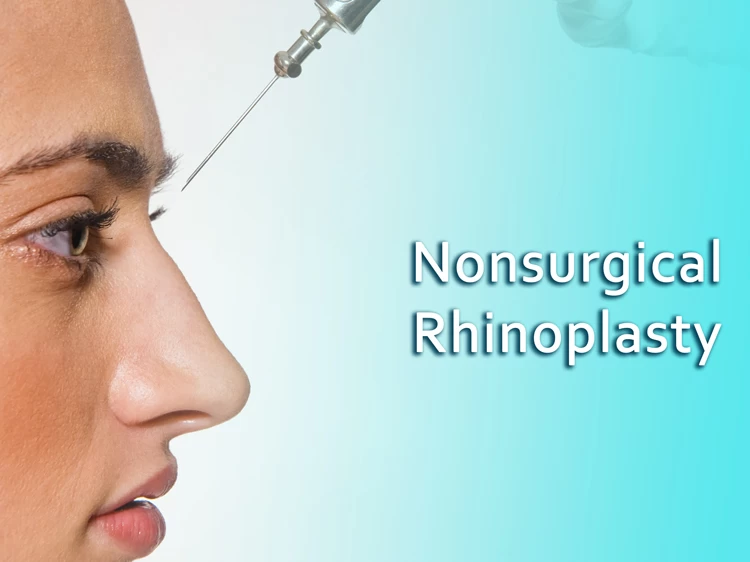
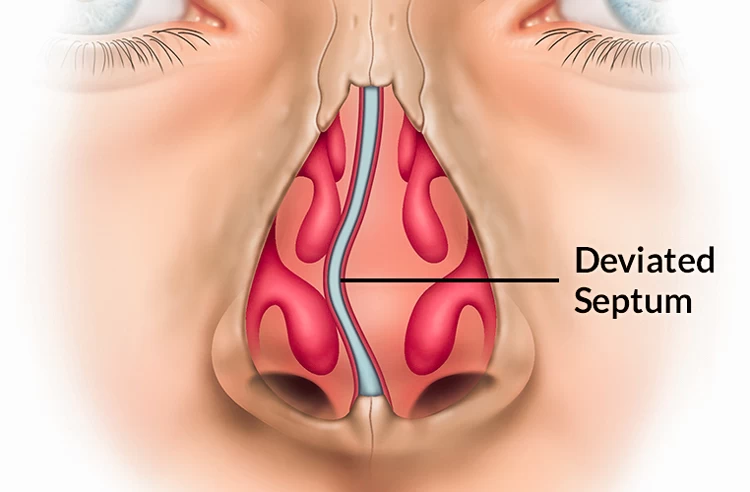
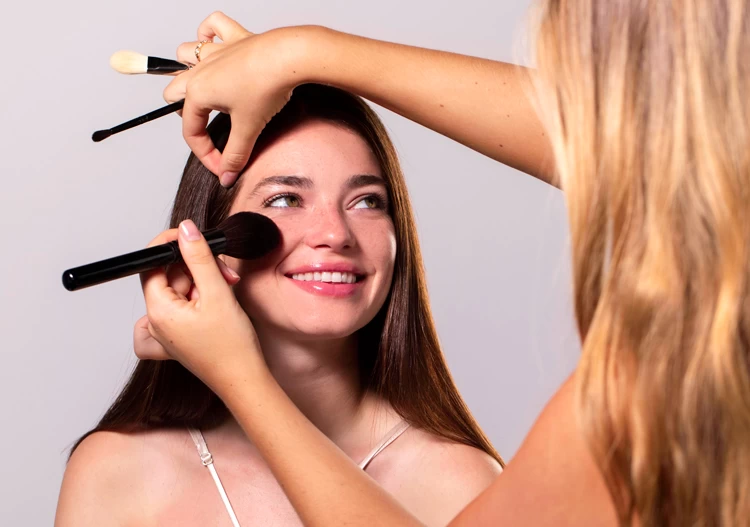
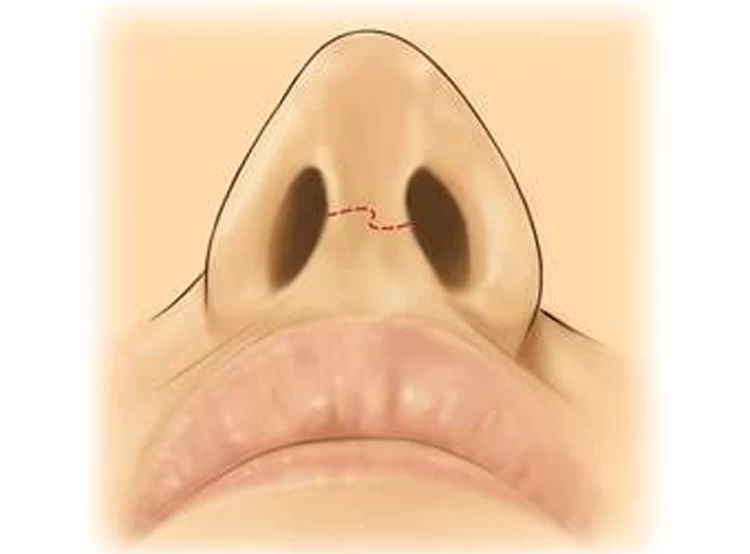
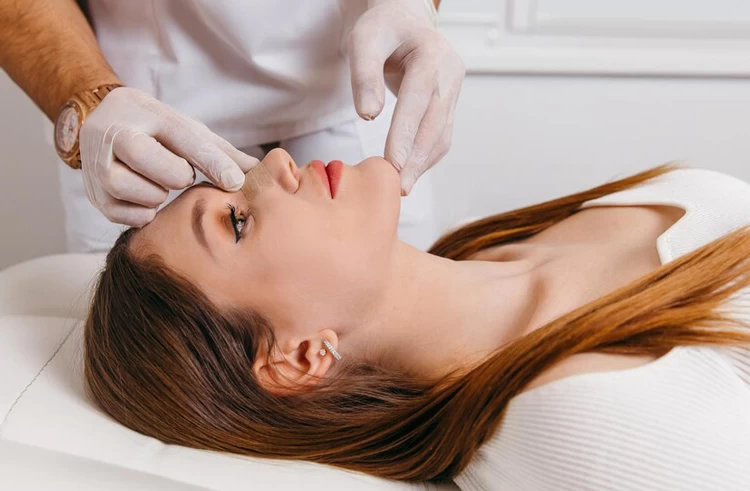


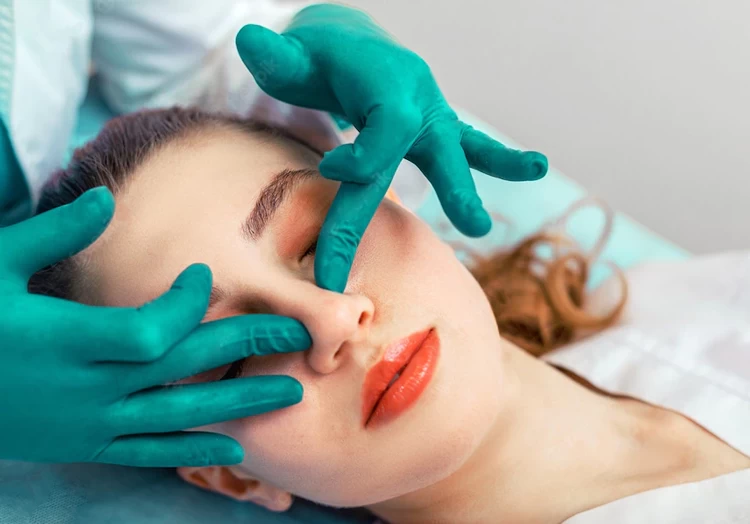
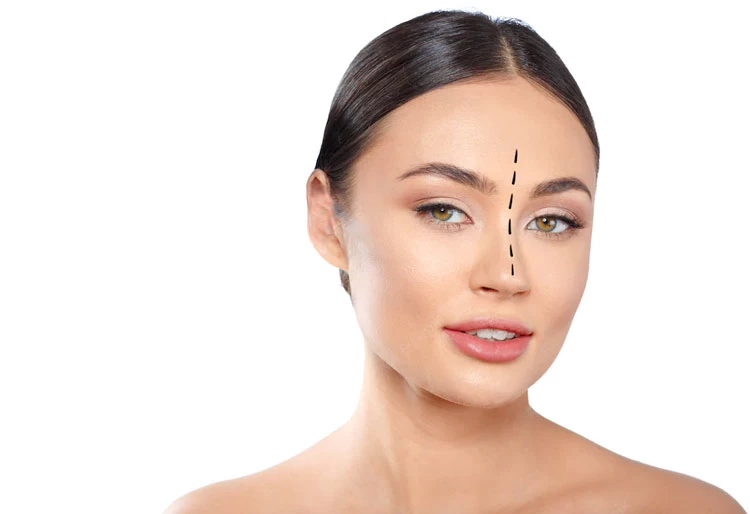


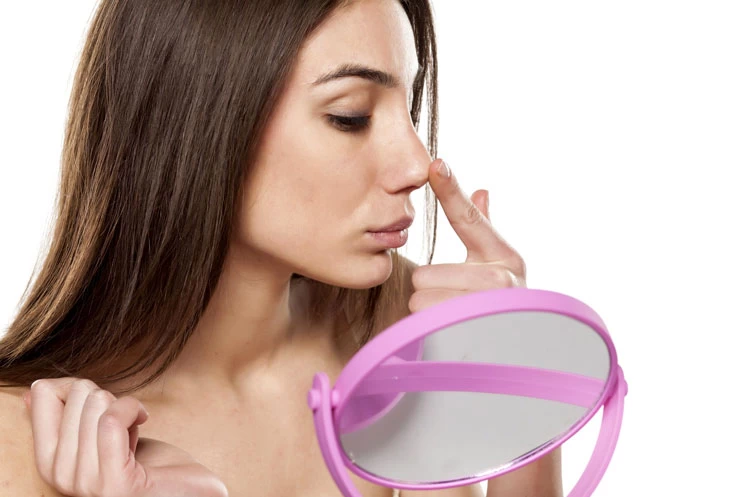
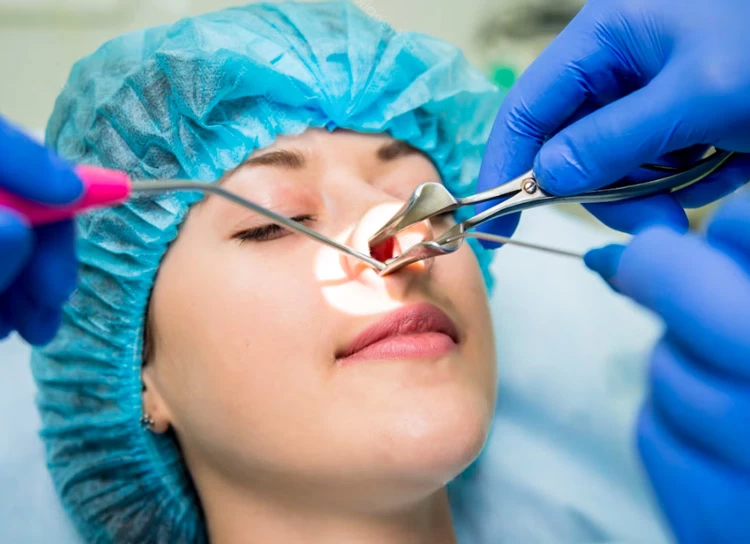
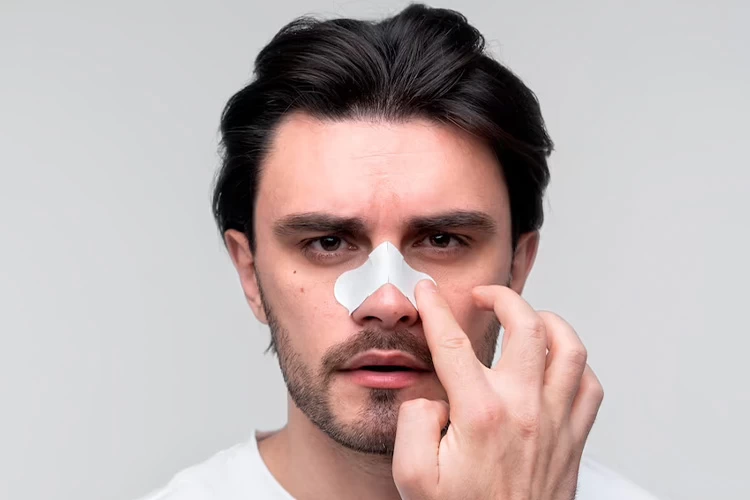
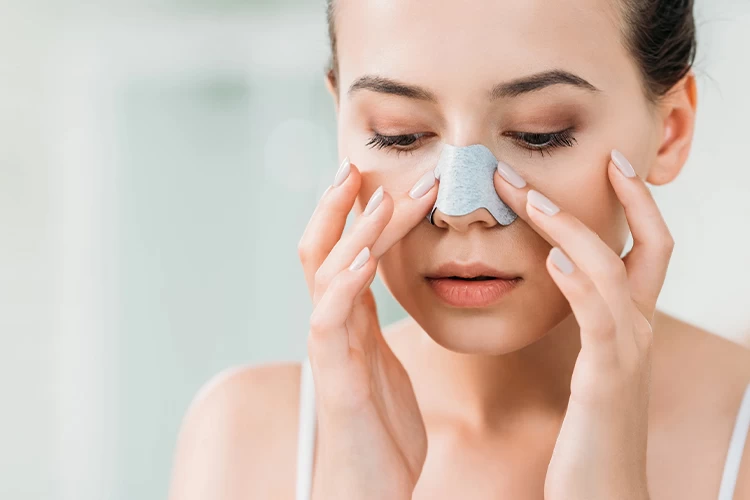




No reviews
Your comment